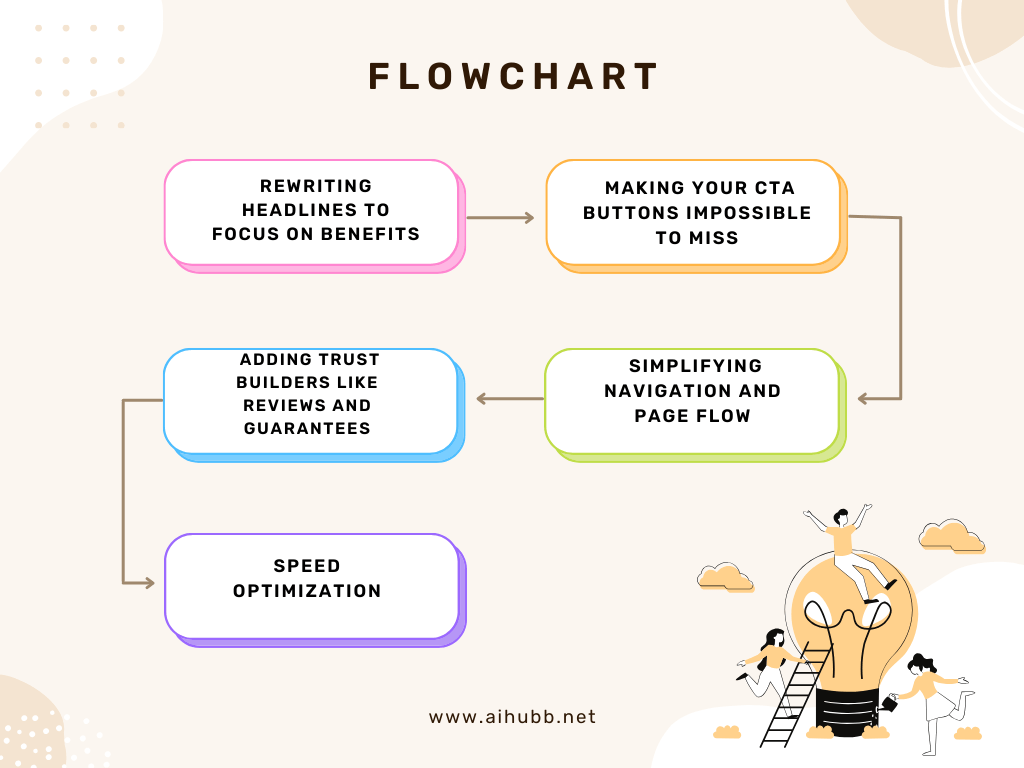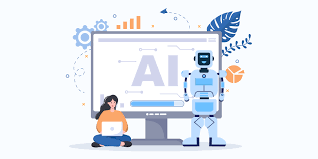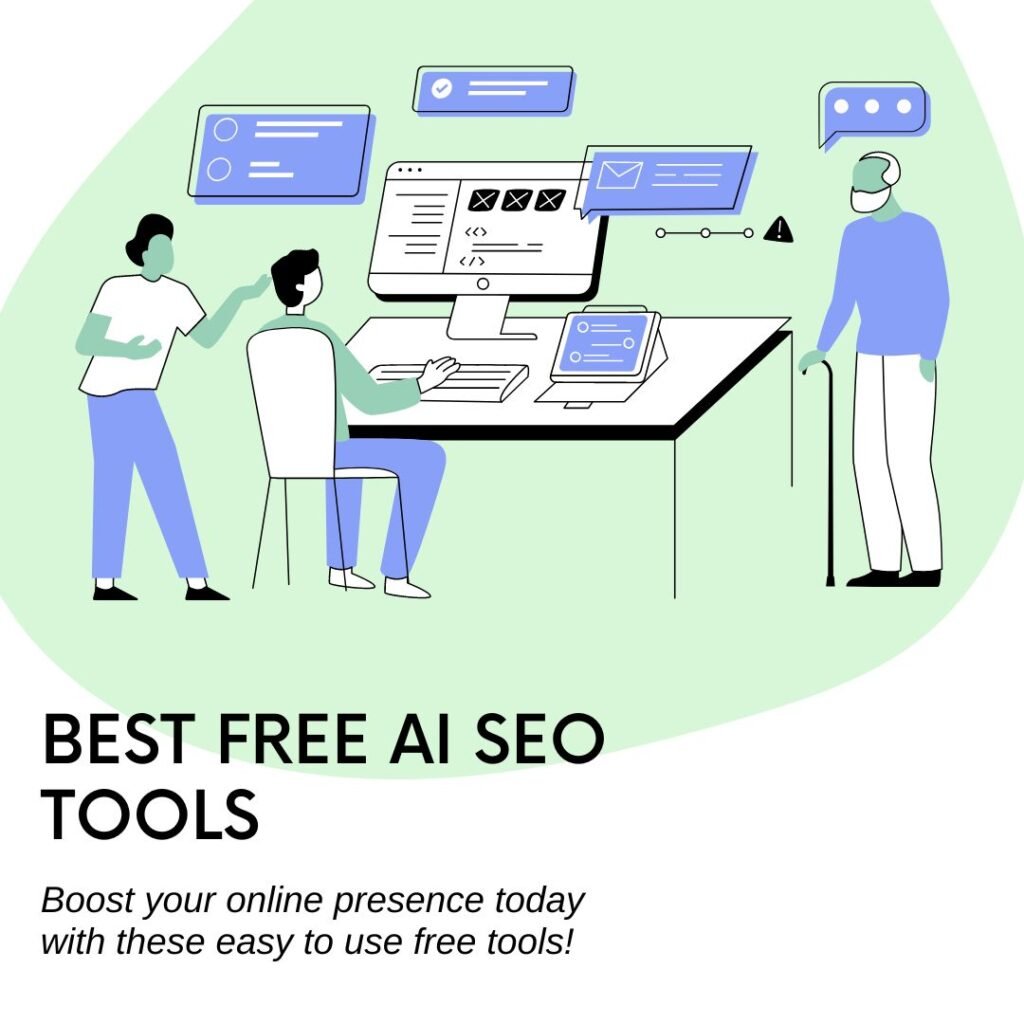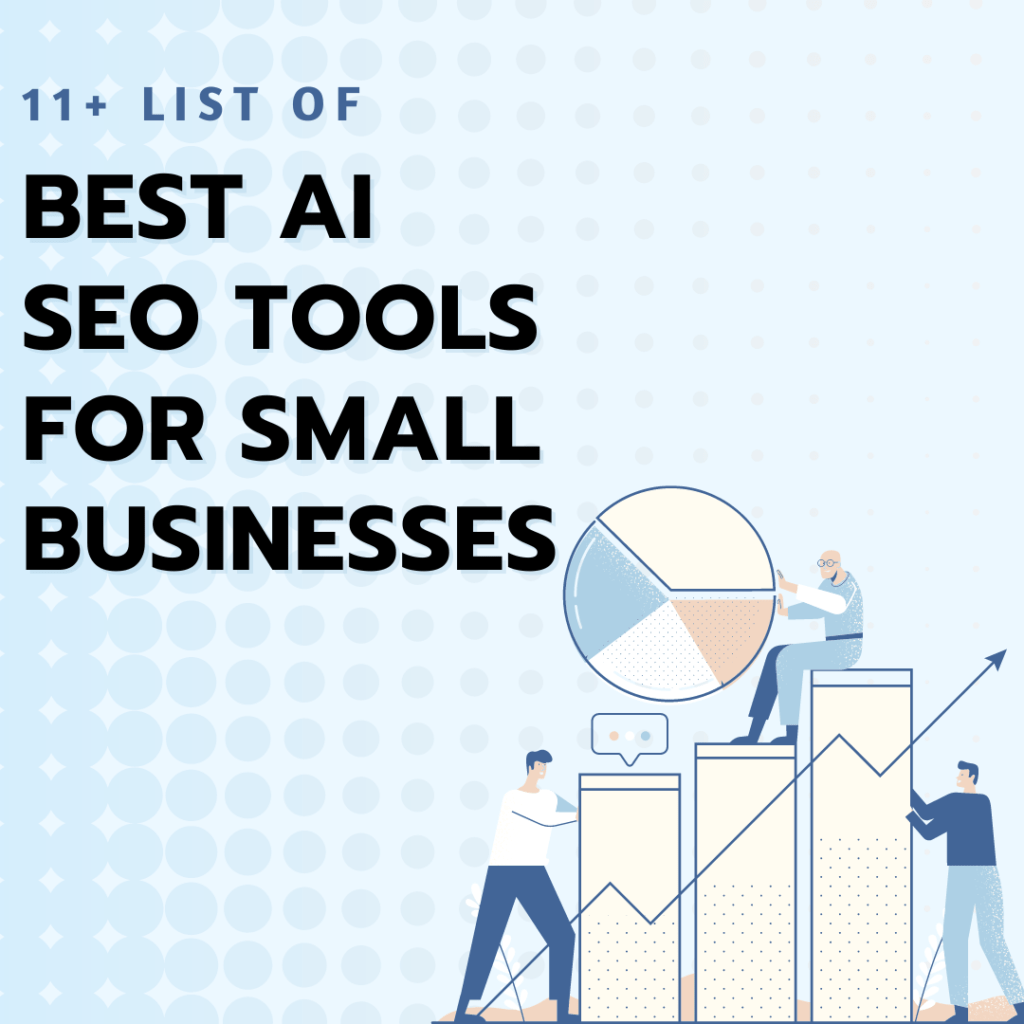A low conversion rate can be a silent killer for your business, signaling deeper issues that could be sabotaging your success. Imagine putting effort into driving traffic to your site, but seeing minimal sales or sign-ups. That’s where a low conversion rate on sales pages comes into play. So, what does it really mean when your conversion rate falters? What is considered a low conversion rate? If your conversion rate is significantly lower than industry benchmarks, it’s time to dig deeper. Whether you’re running a low conversion rate Shopify store or any other eCommerce platform, this problem can leave you questioning the effectiveness of your entire site.
Is your messaging falling flat? Are your CTAs being ignored? Or maybe it’s something more technical, like slow load times or poor mobile optimization. A low conversion rate might be hiding behind small issues that seem insignificant at first, but together, they have a huge impact on your sales performance. Understanding the root causes of a low conversion rate is the first step toward making significant improvements.
In this blog, we’ll break down what a low conversion rate says about your site and show you practical, effective strategies to fix it. From understanding the fundamentals of conversion rate means to addressing the common pitfalls that lead to poor performance, you’ll get the insights needed to turn your site into a high-converting machine. Ready to tackle this challenge head-on? Let’s dive in and fix that low conversion rate once and for all!
What a Low Conversion Rate Really Means for Your Business
A low conversion rate isn’t just a minor inconvenience—it’s a sign that something fundamental isn’t working. It reveals that your site may not be compelling, persuasive, or user-friendly enough to turn visitors into customers. You might be attracting the right audience, but if your website isn’t engaging them properly, they won’t take the next step.
This problem cuts deeper than surface-level design or flashy graphics. It reflects a breakdown in communication between your brand and your visitors. Whether it’s poor messaging, weak offers, or unclear navigation, a low conversion rate tells you that your site needs serious optimization to fulfill its potential. For more insights into conversion optimization, check out this guide on improving conversion rates.
Why You Can’t Afford to Ignore a Low Conversion Rate
The longer you wait to address a low conversion rate, the more money you lose. Every day your site underperforms, you’re paying for traffic that isn’t converting into leads or sales. It’s like running a storefront with lots of foot traffic but no purchases—clearly, something’s off.
More importantly, a low conversion rate stunts your growth. Without converting users, you can’t scale your business, reinvest in marketing, or justify higher ad spend. Fixing this issue isn’t just about boosting numbers; it’s about unlocking sustainable revenue. If you’re wondering about common conversion rate pitfalls, check out this HubSpot article on why websites fail to convert.

Breaking Down the Basics
What Is a Low Conversion Rate and How Is It Calculated
A low conversion rate occurs when a small percentage of your website visitors take a desired action—like signing up, booking a call, or completing a purchase. It’s a performance metric that gives insight into how well your site is doing its job.
You calculate it by dividing the total number of conversions by the total number of visitors, then multiplying by 100. For instance, if you have 1,000 visitors and only 10 convert, your conversion rate is 1%. Most businesses aim for a conversion rate between 2% and 5%, depending on the industry. Learn more about calculating conversion rates with this Google Analytics guide.
But numbers alone don’t tell the whole story. Context is key. A 3% rate might be excellent for a complex B2B offer, but disappointing for a simple eBook download. Benchmarking against industry standards helps you define what “low” really means for your niche. For industry benchmarks on conversion rates, visit ConversionXL’s research.
The Difference Between Low Traffic and a Low Conversion Rate
A common mistake is confusing low traffic with a low conversion rate. These are two separate issues with very different fixes. Low traffic means not enough people are visiting your site. A low conversion rate, however, means plenty of people are visiting—but they’re not taking the action you want them to.
In fact, increasing traffic without fixing your conversion rate just magnifies the problem. You end up spending more on ads and marketing to attract visitors who still don’t convert. Before scaling traffic, it’s smarter to optimize the experience for the people already coming. Learn more about traffic vs conversion differences with Neil Patel’s guide.
Understanding this distinction helps you prioritize. If your site is getting consistent traffic but conversions are stagnant, it’s time to zero in on optimizing user experience, messaging, and design.
Why Your Site May Look Great But Still Convert Poorly
A visually appealing site is no guarantee of results. Your design may win awards, but if it doesn’t lead users toward a specific goal, your conversion rate will suffer. A common pitfall is focusing too much on appearance and not enough on functionality.
Great design supports clarity. It emphasizes calls to action, minimizes distractions, and makes it easy for users to navigate. If your layout is cluttered, your message is unclear, or the next step isn’t obvious, visitors will simply leave—regardless of how stunning your site looks.
Form must follow function. Users come to your site for value, not visuals. The design should support the journey, not dominate it. Balance aesthetics with utility, and prioritize elements that move the needle on conversions. For tips on improving design for conversions, visit Smashing Magazine’s insights.
Common Causes Behind a Low Conversion Rate
Your Website Messaging Isn’t Clear Enough
Unclear messaging is one of the most frequent culprits behind a low conversion rate. Visitors should understand what your business does within seconds of landing on your site. If your value proposition is buried or too vague, they won’t stick around to figure it out.
Clarity beats cleverness every time. Instead of using fancy language or buzzwords, focus on what your visitor gains. Speak to their pain points and how your product or service solves them. A strong, benefit-driven headline can immediately boost conversions. Check out this clear messaging guide from CopyBlogger.
Design Flaws That Confuse Instead of Convert
Poor design creates cognitive friction. If users can’t find the information they need or feel overwhelmed by clutter, they’ll leave. Common design mistakes include inconsistent typography, unclear layout hierarchy, and low-contrast buttons that blend into the background.
Conversion-friendly design uses whitespace effectively, places emphasis on key areas (like the CTA), and guides the user’s eyes in a logical flow. Even subtle tweaks like button color, font size, or spacing can dramatically improve usability and engagement. For better design, explore this Conversion Rate Optimization resource from Optimizely.
Your Calls-to-Action Don’t Spark Action
Your call-to-action (CTA) is the linchpin of conversion. If it doesn’t stand out, lacks urgency, or fails to communicate value, users won’t click. A CTA should be compelling, benefit-oriented, and contextually placed throughout your site.
Try variations that appeal to emotion or offer something specific: “Start My Free Trial,” “Get Instant Access,” or “Boost My Sales Today.” Test different formats—buttons, links, scroll triggers—to see what resonates with your audience. Learn more about CTAs from Unbounce’s blog.
Slow Page Speed That Drives People Away
Page speed isn’t just a technical issue—it’s a conversion killer. Research shows that even a one-second delay in load time can reduce conversions by up to 7%. Slow-loading pages frustrate users and damage credibility.
To fix it, compress images, enable browser caching, use a content delivery network (CDN), and reduce server response times. Prioritize speed as part of your ongoing optimization strategy. For more on page speed, check out Google’s PageSpeed Insights tool.
Your Site Isn’t Mobile Friendly
If your site isn’t responsive, you’re missing out on a huge chunk of traffic. Mobile users expect a seamless experience—fast load times, intuitive navigation, and easy-to-click buttons.
Mobile optimization also impacts your Google rankings. A low conversion rate on mobile is often due to unresponsive layouts, tiny fonts, or menus that are hard to use. Fix these issues and you’ll often see a rapid improvement in performance. Find more about mobile optimization at Google’s Mobile-Friendly Test.
Trust Issues That Stop Users From Taking the Next Step
Trust is non-negotiable. If your site feels shady, outdated, or hard to verify, visitors won’t feel safe converting. No HTTPS, no contact info, and no visible reviews all add up to doubt.
Include trust signals like secure payment badges, customer testimonials, third-party reviews, and clear privacy policies. Even a simple “Trusted by 5,000+ customers” line can reduce friction and improve your conversion rate. Learn more about trust signals with this Nielsen Norman Group article.
Targeting the Wrong Audience With the Wrong Offer
Even the best-optimized site will fall flat if it’s speaking to the wrong people. A mismatch between your content and your visitors’ intent will always result in a low conversion rate.
Audit your traffic sources. Are you attracting curious browsers or qualified buyers? Make sure your ads, content, and landing pages align with your audience’s needs and expectations. Speak their language, and offer solutions tailored to them. Read more on audience targeting in this Moz blog post to refine your approach.
What a Low Conversion Rate Says About Your Site
Your Users Don’t Know What to Do Next
A low conversion rate often signals that your site lacks clear direction. Visitors might be intrigued by your offer but get stuck figuring out their next move. If there’s no obvious next step, they’ll hesitate—and hesitation kills conversions.
Effective sites use visual hierarchy, bold CTAs, and supportive content to guide the user journey. Think of your site like a map—every page should show visitors the exact route to take, whether that’s booking a call, starting a trial, or making a purchase. For more on how to create strong CTAs, explore this article on optimizing CTAs.
More importantly, reduce friction. Remove unnecessary steps in your funnels. Simplify forms, minimize distractions, and ensure every click feels purposeful. Users don’t want to guess. They want clarity and ease. To learn more about reducing friction, check out this guide on improving user experience.
You’re Failing to Address Visitor Pain Points
People convert when they believe your solution solves their problem. If your site doesn’t clearly identify and address those pain points, conversions will stay low. Too often, businesses focus on features instead of benefits.
Use language that mirrors how your audience describes their struggles. Show empathy. Speak directly to the challenges they’re facing, and demonstrate how your product or service makes their lives easier or better. For an example of how to use empathy in marketing, see this HubSpot post on understanding customer pain points.
Real-world scenarios, before-and-after transformations, and use-case examples can all help visitors see the value more vividly. When they feel understood, they’re more likely to take action. For tips on showcasing customer success stories, visit this guide on leveraging testimonials.
There’s a Disconnect Between Traffic and Intent
One major reason for a low conversion rate is a mismatch between why someone came to your site and what you’re offering. Maybe your ad promised a quick solution, but your landing page dives into a lengthy case study. That’s a disconnect.
Ensure alignment from the first click to the final CTA. Your content, design, and messaging should flow seamlessly and reinforce the visitor’s original intent. If they came looking for a free tool, don’t hit them with a sales pitch right away. For more on aligning traffic with intent, see this article on matching content to user needs.
This also applies to your traffic sources. Traffic from social media might be more top-of-funnel, while search traffic could be more intent-driven. Tailor your messaging accordingly to close the gap between curiosity and commitment. To optimize your content strategy, check out this comprehensive guide to content marketing.
You’re Not Using Social Proof Where It Matters
Social proof builds trust—and trust leads to conversions. If visitors don’t see evidence that others like them have succeeded with your solution, they may hesitate. Testimonials, reviews, case studies, and customer logos create confidence. For more on leveraging social proof effectively, read this blog post on building trust.
Place social proof near your CTAs or form submissions. Make it feel natural, not forced. A short quote from a happy customer next to a signup form can work wonders. Don’t bury these trust-builders on separate pages—put them front and center. Check out this guide on using social proof to increase conversions.
Also, be specific. Generic praise like “Great service!” isn’t as effective as something detailed: “After switching to [Your Product], our leads doubled in three months.” Concrete results inspire belief. To dive deeper into social proof strategies, see this article on its impact on decision-making.
Your Content Isn’t Aligning With Visitor Expectations
When your content doesn’t match what users expect to find, your conversion rate suffers. Maybe your blog post draws in readers looking for quick tips, but your call-to-action pushes a full-blown demo. That disconnect confuses and repels.
Make sure your content sets the right expectations and naturally flows into your offer. If someone’s reading about common SEO mistakes, a CTA for a free SEO audit makes more sense than a webinar on paid ads. For more on crafting relevant CTAs, check out this guide on conversion-focused content.
Alignment is about context. Each piece of content should have a clear, relevant goal—and it should warm the visitor up for the next step. Get this flow right, and you’ll start turning readers into customers. Learn more about aligning content with user intent on Moz’s blog.
AI-Based Fixes for a Low Conversion Rate
Using AI to Analyze User Behavior in Real-Time
AI-powered tools like heatmaps, session recordings, and behavior analytics offer real-time insights into how users interact with your site. They can detect patterns—like where users drop off or where they get confused—allowing you to fix friction points quickly. For a deeper understanding of how AI can optimize conversion rates, explore this guide on AI analytics.
Machine learning models go a step further. They can predict which visitors are most likely to convert and which elements may be hurting your conversions. This level of intelligence can help prioritize what to test and change. For insights on using machine learning in conversion optimization, visit this article on machine learning.
By understanding exactly how users behave, you gain the clarity needed to fine-tune the user journey and lift your low conversion rate.
AI-Powered Chatbots That Guide and Convert Visitors
Smart chatbots are more than customer service tools—they’re real-time conversion machines. When visitors are unsure or on the fence, an AI chatbot can answer questions, offer help, or guide them toward the next step.
Unlike traditional chat, AI-powered bots can understand user intent, personalize responses, and even recommend products. This proactive engagement keeps users from bouncing and nudges them closer to action. For a guide on integrating AI-powered chatbots, read this article on chatbot best practices.
Adding a chatbot to high-exit pages can help recover potential leads and turn passive visitors into active customers.
Personalizing User Experiences With AI Tools
AI excels at personalization. Whether it’s dynamic headlines, personalized product recommendations, or tailored landing pages, AI makes each user feel like the site was built just for them.
This level of relevance boosts engagement and builds trust—both critical for lifting a low conversion rate. Tools like Optimizely and Dynamic Yield allow you to serve different content based on user behavior, demographics, or past interactions. For more on personalizing user experiences, explore this article on AI-driven personalization.
When users feel seen and understood, they’re far more likely to convert.
Running AI-Driven A/B Tests to Optimize Key Pages
Traditional A/B testing is time-consuming. AI-driven testing tools speed things up by running multiple variations at once, analyzing outcomes, and automatically selecting winners. For more on the benefits of AI-driven A/B testing, check out this resource on A/B testing.
These tools can even predict which version will perform better based on historical data. With AI, you can test copy, design, images, and layouts at scale, accelerating the path to higher conversion rates.
Optimization becomes continuous, data-led, and significantly more effective with the help of AI.

Practical Fixes That Make a Big Difference
Rewriting Headlines to Focus on Benefits
Headlines are often the first thing your visitors notice, and they make or break that crucial first impression. A low conversion rate may signal that your current headlines are too vague, too technical, or too focused on features instead of benefits.
Benefit-driven headlines speak directly to your audience’s needs. Instead of “Get Our CRM Software,” say “Close More Deals in Less Time.” That speaks to results, not just the tool. Make your headline about the outcome your user wants.
Strong headlines also evoke curiosity, urgency, or emotion. Use power words, numbers, or questions to draw readers in and guide them toward action. To dive deeper into writing compelling headlines, check out this guide on crafting attention-grabbing headlines.
Making Your CTA Buttons Impossible to Miss
Your call-to-action (CTA) button should stand out like a lighthouse in a foggy sea. If your CTA blends in with the rest of your page or lacks persuasive language, your visitors might scroll right past it.
Use contrasting colors, clear positioning, and bold text that communicates exactly what the user will get. Phrases like “Get My Free Report” or “Start Saving Today” are much more compelling than a dull “Submit” or “Click Here.” For more insights on optimizing CTA buttons, check out this blog on effective CTA button design.
Placement matters too. Make sure your CTA appears multiple times—especially above the fold, at the end of your copy, and after any major point of persuasion. Repetition reinforces intent. To see how CTA placement can impact your conversions, take a look at this article on the science of CTA positioning.
Simplifying Navigation and Page Flow
Complex navigation frustrates users. If your visitors can’t find what they’re looking for within a few seconds, they’ll leave. Every additional click adds friction to the experience.
Simplify your menus. Remove unnecessary links. Stick to clear, intuitive page structures. Use breadcrumbs and progress indicators on longer processes like checkout flows or multi-step forms. To learn more about streamlining navigation, visit this resource on simplifying web navigation.
Also, make sure your page has a logical narrative. Each section should guide the user closer to the desired action. Remove distractions and keep your message focused. For tips on creating a smooth page flow, check out this article on enhancing page user experience.
Adding Trust Builders Like Reviews and Guarantees
Trust is the foundation of conversion. A low conversion rate can often be traced back to skepticism or fear. Are you showing your visitors that others trust you? Are you reducing the perceived risk?
Add real customer reviews, star ratings, trust badges, security seals, and satisfaction guarantees. A money-back guarantee, for example, can remove a major buying barrier. It says: “We believe in our product, and you should too.” For more on the importance of trust signals, read this article on building trust with your website visitors.
Make your trust builders visible at key decision points—next to pricing, before form submissions, and close to CTAs. Even a single well-placed testimonial can tip the scale in your favor. To understand more about effectively using social proof, check out this guide on leveraging testimonials to improve conversions.
Optimizing for Speed, Especially on Mobile
Site speed isn’t just a user experience issue—it’s a conversion killer. If your site takes more than a few seconds to load, users will bounce. Especially on mobile, where attention spans are even shorter.
Compress images, leverage lazy loading, minimize scripts, and use a content delivery network (CDN) to reduce load times. Google’s PageSpeed Insights can give you specific recommendations tailored to your site. For more on how to boost website performance, see this detailed guide on improving website speed.
More than half of all web traffic comes from mobile devices. If your mobile site isn’t fast, responsive, and easy to use, you’re leaving money on the table. To optimize your mobile experience, check out this guide to mobile-first website design.
Conversion Optimization Strategies That Work Long-Term
Creating a Funnel That Matches Visitor Intent
Every visitor lands on your site at a different stage in their journey. Some are just browsing, some are comparing, and others are ready to buy. A successful funnel recognizes these stages and caters to them with the right message at the right time.
Build landing pages for each stage. Use content marketing for awareness, comparison charts for consideration, and testimonials or demos for conversion. Don’t try to convert a cold lead with a hot offer—they’re not ready yet. For more on understanding your visitor’s intent, check out this article on mapping content to user intent.
Match your funnel to your visitor’s mindset, and your conversion rate will rise naturally.
Tracking Micro-Conversions to Spot Drop-Off Points
Not all conversions are final sales. Micro-conversions—like clicking a button, watching a video, or adding a product to a cart—are early indicators of user interest and intent.
Tracking these touchpoints helps you identify where users lose interest. Are they clicking the CTA but not filling the form? Are they abandoning the cart at checkout? Each micro-conversion tells a story. For more on tracking micro-conversions, explore this guide on measuring micro-conversions.
Understanding these behaviors helps you fix the leaks in your funnel before they become a flood.
Building Landing Pages That Actually Convert
Landing pages should do one thing really well—convert. That means no navigation distractions, no off-topic content, and a laser focus on the offer.
Every landing page should have a single goal. Use bold headlines, clear CTAs, and persuasive copy that’s tailored to a specific audience segment. Keep forms short, visuals clean, and benefits upfront. For tips on landing page optimization, check out this comprehensive guide on landing page best practices.
Always be testing. Even small changes—like button colors, word choices, or image placement—can yield surprising results over time.
Testing One Change at a Time (And Letting Data Lead)
Conversion optimization isn’t guesswork. It’s about data. One of the most common mistakes? Making too many changes at once. You can’t measure what works if everything changes simultaneously.
Test one variable at a time—headline, image, CTA copy, layout—and measure its impact. Use A/B testing platforms to validate your changes scientifically. To learn more about A/B testing, visit this resource on A/B testing best practices.
Letting data lead helps you avoid false positives and ensures that every improvement is grounded in actual user behavior, not assumptions.
Tools That Can Help You Fix a Low Conversion Rate
Top AI Tools for Conversion Rate Optimization
AI tools are transforming the landscape of conversion rate optimization. Leveraging machine learning, these tools analyze user behavior in real-time, identify friction points, and suggest improvements that can boost your conversion rate.
Some popular AI-powered platforms include Optimizely, VWO, and Google Optimize. These platforms not only run A/B tests but also use algorithms to predict which design elements, content variations, and user interactions will perform best. For more on how AI is changing conversion rate optimization, explore Optimizely’s AI-powered tools.
AI-driven insights help you make data-backed decisions, automate testing, and ultimately focus your efforts where they’ll have the most impact. Using these tools, you can refine your site’s experience and continually optimize it to match user behavior and preferences. Check out VWO’s approach to AI-powered CRO.
User Behavior Tools That Show You What’s Broken
Understanding how users behave on your site is crucial for identifying bottlenecks that lead to low conversion rates. Tools like Hotjar, Crazy Egg, and FullStory give you heatmaps, session recordings, and funnel analytics, allowing you to observe exactly where users are dropping off.
By studying these tools, you can identify common stumbling blocks. For example, are users clicking on the wrong areas? Are they abandoning your forms midway? Understanding user flow helps you make informed changes that address the root cause of low conversions. Learn more about Hotjar’s heatmaps and Crazy Egg’s visualizations to optimize your user experience.
These tools are invaluable because they show you the real problems, not just the symptoms. With insights into how users interact with your site, you can make targeted improvements that improve your conversion rate.
Form Analytics That Reveal Why People Don’t Submit
Forms are a critical part of many conversion funnels, but if they’re not optimized, they can be a major barrier to conversions. Tools like Formisimo and Zoho Forms can help you track why people abandon forms before submission.
These tools analyze form field abandonment, identify bottlenecks (such as overly complex forms), and suggest ways to simplify and optimize them. It could be that your form is asking too many questions or that your users don’t understand certain fields. By pinpointing exactly where users drop off, you can streamline the process, making it faster and easier for visitors to convert. For more on optimizing forms, read Formisimo’s guide on form optimization and Zoho’s form-building solutions.
Measuring Your Progress
How to Know if Your Fixes Are Working
Optimizing for conversions is a continuous process. After implementing changes, it’s crucial to track their effectiveness. This requires robust tracking and a clear understanding of what success looks like.
Use analytics tools like Google Analytics to monitor your conversion rate before and after the changes. Compare data over time to determine if the optimizations are delivering results. A sudden increase in conversions is a good sign, but be patient—results often take time to manifest, especially when testing multiple variables. For a deeper understanding of tracking and measuring conversions, visit Google Analytics.
Be mindful of external factors that could affect results, like seasonality or marketing campaigns. Always give your optimizations enough time to prove their value.
Important Metrics to Watch Beyond Conversion Rate

While your conversion rate is a key indicator, there are several other metrics you should monitor to gain a holistic view of your site’s performance. These include:
- Bounce Rate: A high bounce rate may indicate that visitors aren’t engaging with your site or landing page. This could be due to poor messaging, design issues, or slow load times. For more on bounce rates, visit this guide on understanding bounce rates.
- Average Time on Page: If users are spending little time on your pages, it may signal a disconnect between your content and their expectations. Check out this article on improving page engagement.
- Exit Rate: High exit rates on certain pages can pinpoint where users are dropping off in your funnel. Learn how to optimize exit rates with this resource on exit page optimization.
- Page Load Time: As mentioned earlier, slow loading times can cause a drop in conversions. Monitor this metric to ensure it’s optimized. For tips on speeding up your website, check out this comprehensive guide on reducing page load time.
By looking at these supplementary metrics, you’ll better understand where issues lie and what needs further attention, allowing you to continuously improve your site’s performance.
Conclusion
Turning a Low Conversion Rate Into a High-Converting Machine
A low conversion rate doesn’t have to be a permanent problem. With a strategic approach and the right tools, you can transform your site into a high-converting machine. By analyzing user behavior, optimizing your design, clarifying your messaging, and leveraging AI to personalize the experience, you can address the root causes of low conversions.
Remember, optimization is an ongoing process. Regular testing, monitoring, and adjustments are key to sustaining high performance. The more you understand your users, the more equipped you’ll be to guide them down the path to conversion. Explore more about conversion optimization at Optimizely’s blog on CRO.
Final Thoughts on Optimizing Your Site for Better Results
Improving your conversion rate is about more than just fixing individual issues—it’s about enhancing the entire user experience. From simplifying navigation to building trust with your audience, each detail plays a role in driving conversions.
With AI tools and a data-driven approach, the process has never been easier or more effective. Keep tracking, testing, and refining, and watch your conversion rate soar as you give users exactly what they need. To learn more about enhancing your website’s conversion performance, visit this article on conversion rate optimization.
Don’t forget to check out this blog for AI Workflow Management to further save time in your business.




